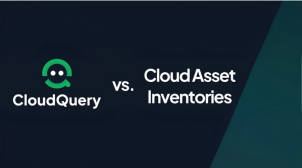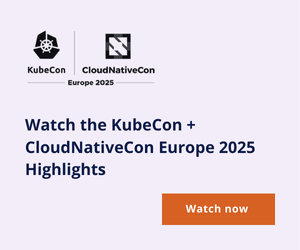Login to your Account
Create Affiliate Account
Trouble Signing In?
Enter your email below to request a Reset Password Link
-
Tempus Multi-Cloud Asset Inventory
Discover how Tempus uses CloudQuery to manage multi-cloud environments at scale, leveraging GCP, Terraform, and Grafana for compliance monitoring and cloud security. Learn from their real-world deployment fetching resources across 80+ AWS accounts and 1000+ GCP projects.
-
How Hexagon built an Infrastructure Data Lake with CloudQuery
Discover how Hexagon, a global digital reality leader, built a serverless infrastructure data lake with CloudQuery, AWS S3, Glue, and Athena. Learn how they achieved centralized visibility, SQL querying, and historical insights across all cloud accounts, with virtually zero maintenance and significant cost savings.
-
AI for Analyzing Your Cloud Asset Inventory
Unlock your cloud asset inventory with AI! Discover CloudQuery's new Model Context Protocol (MCP) server, enabling any AI agent to directly query your infrastructure data using natural language. Learn how to empower security, FinOps, and infrastructure teams with real-time dashboards, tables, and reports, eliminating manual exports and boosting autonomous decision-making.
-
CloudQuery vs. Cloud Asset Inventory Tools
Drowning in multi-cloud complexity? Discover how CloudQuery leads the SQL-based asset inventory space, offering enterprise scalability and persistent storage. Compare it with Steampipe for real-time insights and native cloud tools for single-cloud simplicity, helping platform teams choose the right solution for comprehensive cloud visibility and compliance.
-
7 Reasons Why Businesses Need To Secure AI-Driven Applications With Mend AI
Why securing AI applications is important for businesses and how Mend AI can help protect against emerging AI threats.
-
How Ridgeline Enhanced (And Saved Money) on Their Cloud Security with CloudQuery
Ridgeline, a cloud-native investment management platform, improved infrastructure visibility, automated compliance, and cut cloud costs by over 30% using CloudQuery. By integrating it into their CI/CD pipeline, they scaled to 300+ AWS accounts, expanded resource coverage, and reduced manual overhead—ensuring secure, efficient, and compliant cloud operations.
-
Committing to Safeguard Health Data with HIPAA
DeepL has achieved HIPAA compliance, reinforcing its commitment to the highest standards of data privacy and security in healthcare. Alongside certifications like ISO 27001, SOC 2 Type 2, and GDPR, HIPAA compliance ensures strict safeguards for Protected Health Information (PHI)—from encryption and audit controls to access management and breach notifications. This milestone highlights DeepL’s dedication to protecting sensitive health data and supporting healthcare professionals with secure, trusted translation solutions.
-
From Web 3.0 to Agentic AI: How Tray is Giving LLMs a Body and Brain
Join Tray.ai CTO Alistair Russell as he traces the path from semantic web to Merlin, an agentic AI platform enabling LLMs to act with context and scale.
-
Mastering Modern Threats: Checkpoint's Roy Barda on WAF, API, and Contextual AI
Explore Checkpoint’s AI-driven CloudGuard WAF with Roy Barda—proactive zero-day protection, API security, anomaly detection, and a live demo showcasing advanced threat prevention and usability.
-
SINGAPORE’S LARGEST BANK MOVES TO OPEN SOURCE WITH MARIADB
Discover how DBS Bank, Southeast Asia's largest bank, successfully migrated mission-critical applications from Oracle to MariaDB, achieving 30-70% cost savings, enhanced flexibility with microservices, real-time data streaming, and robust compliance for its demanding financial services operations.
-
CNAPP, eBPF, and Beyond: How Sweet Security Delivers Runtime-First Cloud Protection
Discover how Sweet Security’s eBPF-powered runtime protection and LLMs are revolutionizing CNAP, slashing response times, eliminating false positives, and securing cloud-native environments in real time.
-
Beyond Compliance: Neil Levine Reveals How Anchore is Revolutionizing SBOM Management
Explore SBOM evolution with Anchore’s Neil Levine, uncover new features, security insights, vulnerability ranking, and strategies to manage SBOM sprawl and future automation.






















